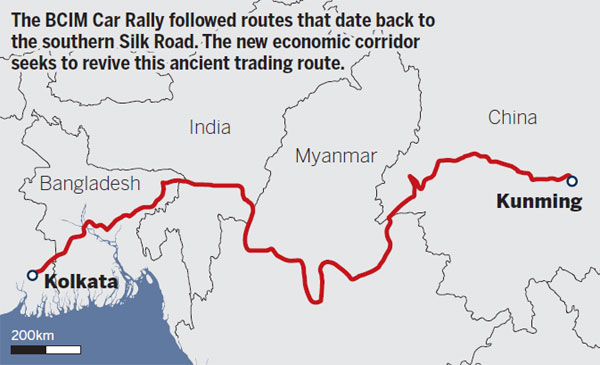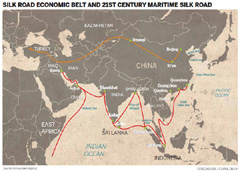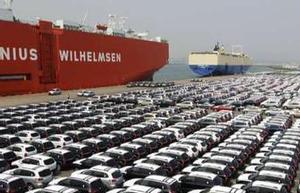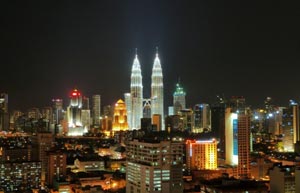
Four countries are examining ways of establishing a new Asian trade lifeline, as Emanuel John reports from Kolkata, India.
When 20 vehicles set off on the first-ever Kolkata-to-Kunming car rally in 2013, the event wasn't simply a sporting contest, it was a harbinger of things to come.
|
 |
| Special: Silk Road taking on a new look |
|
 |
| Tourism to be leading industry along Silk Road |
Over two weeks and 3,000 kilometers, from India to China via Bangladesh and Myanmar, the participants crossed terrain that ranged from mountains to dense, tropical jungle, from vast, fertile plains to deep valleys, plus sluggish streams and expansive rivers.
But while the topography of the region offers inspiration for adventurous travelers, the journey had a much deeper significance.
The BCIM Car Rally, named after the four countries the racers crossed, was part of a wider plan to revive a route that was once an artery of the southern Silk Road, the ancient trade route that covered most of what was then called "the known world".
The BCIM Economic Corridor, the name by which the proposed modern-day counterpart will be known, is less evocative than the original, which conjures up images of caravans, camels and cargo, but it is intended to be equally as far-reaching in impact.
The proposed route will create a fast and efficient link between Kunming in China's southwestern Yunnan province and Kolkata, the most important city in the eastern part of India, while also connecting the cities of Mandalay in Myanmar, and Dhaka and Chittagong in Bangladesh en route.
If things go as planned, the road will not just connect Asia's two economic powerhouses, but will also give an economic boost to Bangladesh and Myanmar, two nations that have not yet capitalized on Asia's tremendous growth in recent years.
|
 |
 |
| East Asian trade talks grind on ahead | China plays key role in Asian trade |
